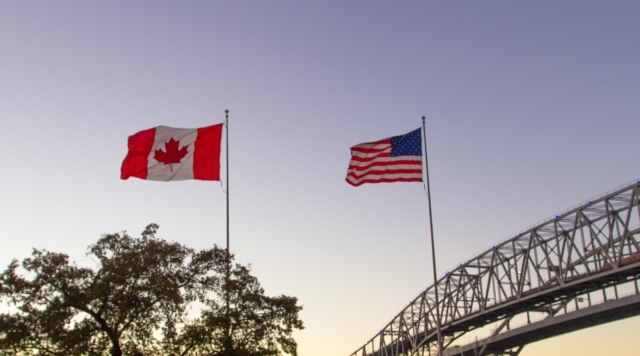Newsletters

Financial markets have a hard time being boring, but the second quarter of 2025 will surely go down as one of the least boring in history—at least eight days of it anyways. We are, of course, referring to the days following President Trump's ironically named 'Liberation Day'. From the time the tariffs were announced on April 2nd to the morning of April 9th, the S&P 500 Index dropped nearly 14%, bottoming approximately 20% below its high set on February 19th. The tech-heavy NASDAQ retreated nearly 15% between April 2nd and April 9th, bottoming nearly 25% below its high set on February 19th.

When thinking back over the last several months, memories of the children’s games we played in kindergarten came flooding back. Perhaps it was the relative disorder the world suddenly found itself in that prompted the connection. Or maybe it was the fact that each child seemed to have their own understanding of the rules—and those rules weren't really going to impact how some played the game anyways! One game in particular kept coming to mind: Duck, duck, goose.

As we look back to the start of 2024, even the most optimistic of market bulls would likely have felt the proverbial limb bending considerably with a promise of a 20+% annual return for the S&P 500 during the year ahead. Having just exited 2023 with a 26% total return — a year in which recession forecasts were the biggest game in town — statistics alone would have left one feeling pretty exposed at that level. After all, consecutive years of 20+% annual returns had only previously been recorded three times in the prior 100 years of S&P 500 history, notwithstanding the fact it had already recorded three years in excess of 20% in the prior five.

Over the past several years, financial and business media have been dominated by two things: inflation and interest rates. As the U.S. Federal Reserve and central banks around the world have grappled with inflation, pundits have been focused on foretelling the future of markets one-quarter-percentage-point at a time. But as Jerome Powell and the yield curve have stolen the highlight reel of late, nothing can compete with the blinding lights of the quadrennial circus that is the U.S. election.

As neighbours to the large and somewhat imposing US-of-A, it can be easy for us Canadians to lose some perception of the boundaries between our two great nations. This can be true in the sense of media, popular culture, trade, trends, etc. Indeed, at times, it can feel we know more about what's going on within the borders of our Southern neighbour than we do our own country. Perhaps nowhere is this more true than business media. Most media outlets feed a constant stream of data focused on U.S. markets—the S&P500 is up, the Dow is down, Jerome Powell said 'cut', Elon Musk Tweeted (do we still call it Tweeting?). Though market data is often misconstrued as economic data, the same is often true there—we seem inherently aware of the condition of the US economy, while the Canadian economy can be somewhat of an afterthought.

The simple, if not particularly satisfying, reply to the above question is that we can then expect benchmark interest rates to remain elevated for longer. This 'higher-for-longer' narrative has ebbed and flowed over the past couple of years, as periodic inflation and economic data—along with central-bank commentary—have, at various times, prompted calls for imminent rate cuts. Such calls have followed a consistent pattern of market participants and pundits overshooting the mark, only for such calls to be consistently dashed by subsequent data that continue to defy expectations. At the time of writing, we are witnessing the slow and steady death of the market's most recent foray into the 'imminent' rate-cut forecast.

As we entered 2023, you could scroll to any financial-reporting website, newspaper, or research publisher, and you'd almost certainly be greeted by a gloomy economic outlook for the year ahead. Market 'forecasters' and prognosticators alike nearly all predicted a recession in North America, ushered in by high interest rates, slowing economic growth, and high inflation—all of which were sure to crush the engine of the economy (the consumer). The turning point would likely come as a result the U.S. Federal Reserve (the Fed) maintaining high interest rates for too long, eventually causing something of systemic importance to 'break'.

In my 38-plus years of being in financial services, I cannot recall a time when there has been more agreement around a pending economic forecast than there has been for the 'inevitable' recession that has loomed large on the global horizon since mid-2022. From that time until well after the U.S. regional bank scare in March of this year, the 'R-word' dominated the headlines, and there was little doubt the economy was on the brink of a downturn. And yet, as summer wore on and economic data continued to defy forecasts, more and more economists (and talking heads) began touting the so-called 'soft-landing' scenario. And why not? So far it has been the recession that just wouldn't be.

